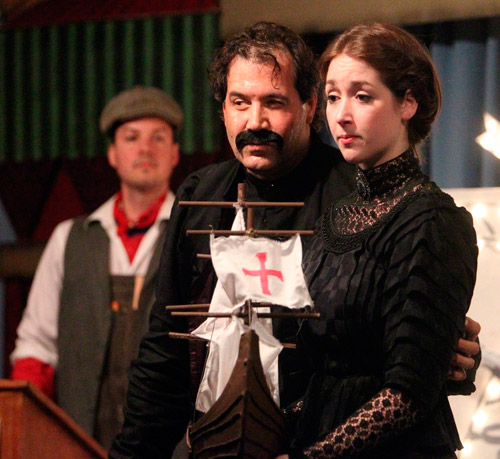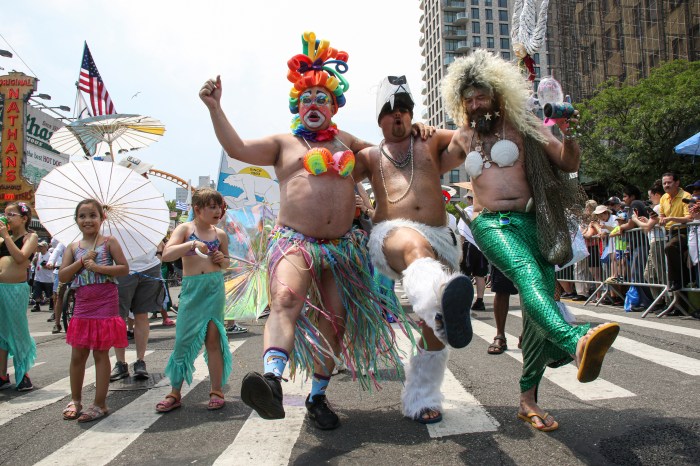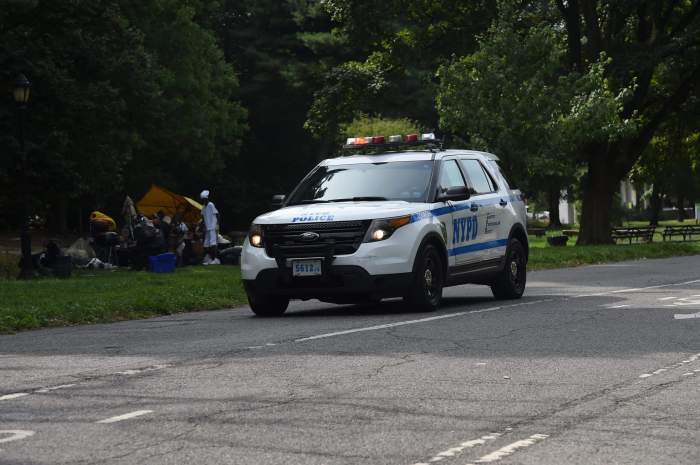If you want to be bored, we suggest watching paint dry.
A cynical 1904 screed about Coney Island’s decadence written by a bleak Russian philosopher and adapted into a play by the amusement park’s biggest booster gets a revival at Coney Island USA this weekend, but its title — “Boredom” — is a total misnomer. The production strikes comedic notes (dark, Russian ones — the best kind), tugs at heart strings, and is loaded with enough philosophical makes-you-think moments to turn Malcolm Gladwell green with envy.
But like all philosophical statements, ours comes with a qualifier — the play is best suited for Coney history-philes and fans of Russian lit. If you think Karl Marx is a mustachioed film star or that Fyodor Karamazov and sons are the latest roots-coustic indie-folk-rock craze, save your cash for the Cyclone.
Russian thinker Maxim Gorky wrote the essay after visiting Sodom by the Sea in 1904. He was staying in Staten Island and (understandably) very bored, so his comrades tried to cheer him up with a trip to Coney Island. But Gorky immediately pegged the People’s Playground as a decadent sham — a particleboard amusement Mecca that could not sate New Yorker’s spiritual boredom.
In his adaptation, Coney Island’s unofficial mayor Dirk Zigun frames the action inside an amusement workers union meeting. Gorky and mistress Maria Andreyeva perform the essay as an address to the union hall, lending additional narrative to what is essentially an hour-long monologue.
Most of the lines come straight from Gorky’s vodka-fueled diatribe, but Zigun has inserted small scenes that break from the text and give the audience a few shots of character development.
Having Gorky and Maria split monologist’s duties breaks the relative monotony. And voicing the essay through two separate characters helps audiences to buy into Gorky’s radical claims without writing them off as one writer’s grumpy exhortations.
In his essay, Gorky lambasts the papier-mâché props that populated old rides like “Hell Gate” in the historic People’s Playground. Set designers Kate Dale and Marie Roberts picked up the cue and ran with it beautifully. This play may be the first in community theater history where constructing sets from papier-mâché was an artistic choice rather than a sin of necessity. We love it.
We’re no anthropologists, but Atalanta Siegel’s Russian accent was good enough to make us think Zigun and director James Rana plucked the Washington D.C.-raised actress straight from Brighton Beach Avenue.
We would, however, have liked to see more of Chris DePierro’s Gorky. In the few moments he commanded center stage, DePierro spat hellfire and cynicism like a serf who just spilled borscht on his favorite cassock — even if his New Jersey accent occasionally rang through.
And props to Luis Michaels, who played Tony the Carpenter, for keeping a cool head and tossing in a little ad-lib when a drunken heckler proclaimed (quite ironically) that the show was “a f—ing bore” and stomped out of the theater.
Gorky infamously said of Coney Island “If people come here to be amused, I have no faith in their sanity.” But If you go see “Boredom,” we sure as hell won’t call the men in white coats on you.
“Boredom” at Coney Island USA [1208 Surf Ave. at W. 12th Street in Coney Island, (718) 372–5159, www.coney
























